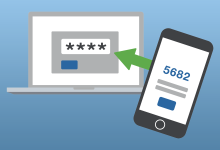
You probably have heard about cryptocurrency mining. What is this all about? How do you start mining cryptocurrency? We will be discussing the mining of crypto here.
For starters, it is always very important to do detailed research about crypto mining before diving into the business as different protocols may require unique hardware and software. While mining attracts various people to the cryptocurrency ecosystem due to its possible high rewards, it also enables them to partake in an integral role in making decentralized blockchains possible.
What is cryptocurrency mining?
Cryptocurrency mining refers to the process of verifying transactions and adding them to the public ledger (blockchain) of a particular cryptocurrency network. Miners use specialized computers and software to solve complex mathematical problems, and in return, they receive a reward in the form of newly minted cryptocurrency.
The mining process varies depending on the cryptocurrency being mined, but in general, miners compete with each other to solve a mathematical puzzle. The first miner to solve the puzzle and verify the transaction is rewarded with a certain amount of cryptocurrency.
Mining can be a profitable activity, especially if the value of the cryptocurrency being mined is high. However, it requires a significant investment in hardware and electricity costs, as mining requires a lot of computing power and energy.
Some popular cryptocurrencies that can be mined include Bitcoin, Ethereum, and Litecoin. As these cryptocurrencies become more mainstream, the mining process becomes more competitive, requiring more advanced hardware and software to remain profitable.
Types of cryptocurrency mining
There are several types of cryptocurrency mining, including:
Proof-of-Work (PoW) mining: This is the most common form of mining used by cryptocurrencies like Bitcoin, Ethereum, and Litecoin. Miners compete to solve a complex mathematical puzzle and the first one to solve it is rewarded with newly minted coins. PoW mining requires a lot of computing power and energy, and the difficulty of the puzzle increases as more miners join the network.
Promoted contents:
Proof-of-Stake (PoS) mining: This is a newer form of mining used by some cryptocurrencies like Cardano and Ethereum 2.0. In PoS mining, instead of solving a mathematical puzzle, validators are chosen based on the amount of cryptocurrency they hold and stake as collateral. Validators are then responsible for verifying transactions and maintaining the network. PoS mining is more energy-efficient than PoW mining, but it requires a significant amount of cryptocurrency to participate.
Cloud mining: This is a form of mining where individuals or companies rent computing power from data centers to mine cryptocurrencies. Cloud mining can be a more convenient option for those who don’t want to invest in expensive mining equipment, but it’s important to be cautious of scams in the cloud mining industry.
CPU mining: This is a type of mining that uses a computer’s central processing unit (CPU) to mine cryptocurrencies. CPU mining is not as efficient as other forms of mining, but it can be a good option for beginners or those with low-end hardware.
GPU mining: This is a type of mining that uses a computer’s graphics processing unit (GPU) to mine cryptocurrencies. GPUs are more efficient than CPUs for mining, and they can mine a wider range of cryptocurrencies.
ASIC mining: This is a type of mining that uses specialized hardware called Application-Specific Integrated Circuits (ASICs) to mine cryptocurrencies. ASICs are designed to perform a specific task, making them more efficient than CPUs or GPUs for mining. ASIC mining is generally reserved for larger mining operations due to the high cost of the hardware.
How to start mining Crypto?
Mining cryptocurrency involves several steps. Here’s a general overview of how to mine crypto:
- Choose a cryptocurrency to mine: Research different cryptocurrencies to determine which one you want to mine. Consider factors such as the difficulty level, the mining reward, and the cost of mining equipment and electricity.
- Choose your mining hardware: Depending on the cryptocurrency you choose to mine, you will need specialized mining hardware such as ASICs or GPUs. Research the hardware requirements for your chosen cryptocurrency and invest in equipment accordingly.
- Download mining software: Once you have your mining hardware, you’ll need to download mining software. There are several mining software options available, such as CGminer, BFGminer, and EasyMiner. Make sure to choose software that is compatible with your hardware and the cryptocurrency you want to mine.
- Join a mining pool: Mining pools are groups of miners who combine their computing power to increase their chances of earning a mining reward. Joining a mining pool can help increase your chances of earning a reward, especially if you have limited computing power.
- Configure your mining software: Once you’ve downloaded your mining software, you’ll need to configure it to connect to your mining pool and start mining. Follow the instructions provided by your mining software to set up your miner and start mining.
- Monitor your mining: Mining can be a time-consuming process, so it’s important to monitor your mining activity regularly. Keep an eye on your mining pool dashboard and your mining software to ensure everything is running smoothly.
- Withdraw your rewards: Once you’ve earned a mining reward, you’ll need to withdraw it from your mining pool. Follow the instructions provided by your mining pool to withdraw your rewards.
Mining cryptocurrency can be a complex and time-consuming process, and it’s important to research and understand the risks involved before investing in mining equipment.








